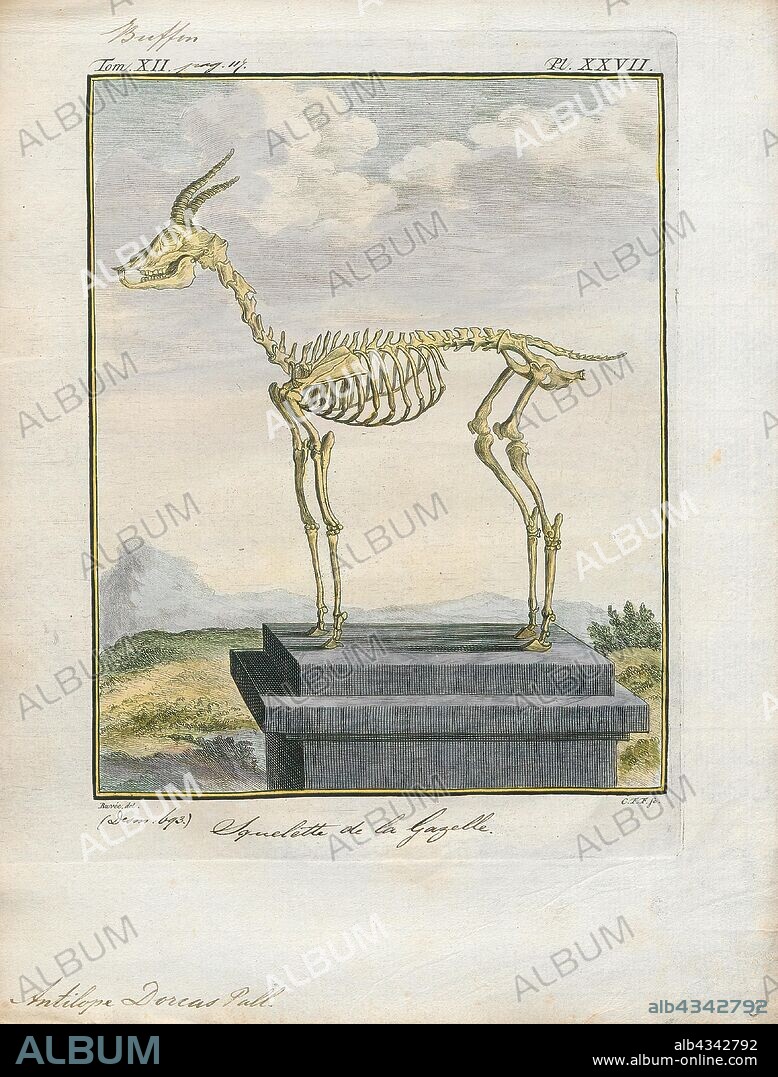alb4342792
Antilope dorcas, Print, Blackbuck, The blackbuck (Antilope cervicapra), also known as the Indian antelope, is an antelope found in India, Nepal, and Pakistan. The blackbuck is the sole extant member of the genus Antilope. The species was described and given its binomial name by Swedish zoologist Carl Linnaeus in 1758. Two subspecies are recognized. It stands up to 74 to 84 cm (29 to 33 in) high at the shoulder. Males weigh 20–57 kg (44–126 lb), an average of 38 kilograms (84 lb). Females are lighter, weighing 20–33 kg (44–73 lb) or 27 kg (60 lb) on average. The long, ringed horns, 35–75 cm (14–30 in) long, are generally present only on males, though females may develop horns, as well. The white fur on the chin and around the eyes is in sharp contrast with the black stripes on the face. The coats of males show two-tone colouration; while the upper parts and outsides of the legs are dark brown to black, the underparts and the insides of the legs are all white. However, females and juveniles are yellowish fawn to tan., skeleton.

|
Zu einem anderen Lightbox hinzufügen |
|
Zu einem anderen Lightbox hinzufügen |



Haben Sie bereits ein Konto? Anmelden
Sie haben kein Konto? Registrieren
Dieses Bild kaufen

Untertitel:
Siehe automatische Übersetzung
Antilope dorcas, Print, Blackbuck, The blackbuck (Antilope cervicapra), also known as the Indian antelope, is an antelope found in India, Nepal, and Pakistan. The blackbuck is the sole extant member of the genus Antilope. The species was described and given its binomial name by Swedish zoologist Carl Linnaeus in 1758. Two subspecies are recognized. It stands up to 74 to 84 cm (29 to 33 in) high at the shoulder. Males weigh 20–57 kg (44–126 lb), an average of 38 kilograms (84 lb). Females are lighter, weighing 20–33 kg (44–73 lb) or 27 kg (60 lb) on average. The long, ringed horns, 35–75 cm (14–30 in) long, are generally present only on males, though females may develop horns, as well. The white fur on the chin and around the eyes is in sharp contrast with the black stripes on the face. The coats of males show two-tone colouration; while the upper parts and outsides of the legs are dark brown to black, the underparts and the insides of the legs are all white. However, females and juveniles are yellowish fawn to tan., skeleton
Bildnachweis:
Album / quintlox
Freigaben (Releases):
Model: Nein - Eigentum: Nein
Rechtefragen?
Rechtefragen?
Bildgröße:
3492 x 4598 px | 45.9 MB
Druckgröße:
29.6 x 38.9 cm | 11.6 x 15.3 in (300 dpi)
 Pinterest
Pinterest Twitter
Twitter Facebook
Facebook Link kopieren
Link kopieren Email
Email
